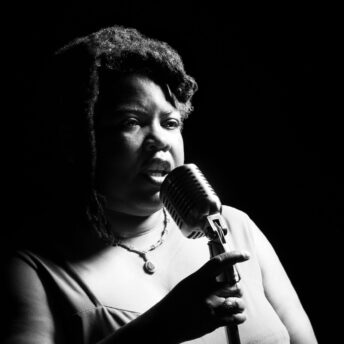
'Lote' by Shola Von Reinhold (Jacaranda)
Reviewed by Cheryl Martin
Escapism. Self-invention.
Escape-from-the-self. Art as escape.
Self-as-art. Indulgence. Opulence.
Self-indulgence. Art-as-infatuation.
Infatuation-as-transfixion.
Transcendence.
Lote, Glaswegian Shola von Reinhold’s shimmering debut novel, glides through all of this by following Black queer working-class aesthete, Mathilda Adamarola’s literary infatuation with a lost Black Scottish modernist poet: Hermia Druitt, one of her many “Transfixions”.
But Mathilda is not her true name, merely her latest incarnation. Mathilda escapes the grey, monolithic, impoverished outsider realms into which we presume she was born by recreating herself as an extravagant, glamourous being who manages to pass in the land of the privileged – the white and privileged. However precariously and impermanently she occupies these spaces, however many times she is forced to start again, she is always planning a new Escape – a new persona, name and temporary dwelling-place:
“With each Escape…I was brought closer to my Transfixions, each vanishing act pulling me towards the unknown source of an ache first felt years ago… Somewhere Arcadian; perhaps a garden with charming people.”
One of the book’s many sly triumphs is that even while celebrating Mathilda’s ability to insert herself into privileged white circles – much like her Transfixion, Hermia, did in the 20s with the decadent Bright Young Things – it exposes those circles as “drab” and life-denying. Pursuing Hermia’s history leads Mathilda to join an artists’ residency in Dun, the small European town where Hermia once lived, without knowing anything regarding what the art is about, or who runs the programme.
Instead of the “charming people” she might have expected, the residency is filled with dull, doctrinaire, conceptual artists whose highest aspiration is to incinerate their own work, to never have an audience. It is the complete opposite of Mathilda’s search for the ecstatic sensuous feast represented by her idols and she is hunted everywhere in the residency by a deadening white gaze, caught in an unwanted, continuous relationship of erasure:
“Looking up, Griselda was watching me, expressionless, by way of the same mirror I had used to spy on her. Yes, they looked more ghoulish than ever….”
Lote itself transcends that erasure. Lote invents an academic history, Black Modernists, that chronicles Hermia’s and other’s lost Black literary lives. Through this alternative history and Mathilda’s search, it’s not only the artists on the self-destructive contemporary residency who end up being skewered: it’s the Bright Young Things themselves. Between their careless, inconsistent treatment of Hermia and Virginia Woolf’s observation in A Room of One’s Own that she had no need of including a “woman of colour” in her notion of English women, the “Arcadian garden” with its “charming people” isn’t so charming after all.
But Mathilda also has allies: Agnes, a long time rescuer and hoarder of Black art buried in archives; Malachi, her first partner in Escapism; and most of all, Erskine-Lily – resplendent, sumptuously Black Erskine-Lily. He is “the apparition of Hermia”, who helps her find her lost poet in the history of the hidden esoteric society, Lote, while bending reality to reflect his own splendour:
“He… came… into the room, a-dapple and gold, Venice incarnate. He was precariously holding a tray on which balanced an uncorked, hissing bottle and four stained-glass cordial glasses, bloom-shaped, as if he had twisted up a basilica windowpane. The room realigned on his entry. Became even more scenic. All the golds came to the fore—harmonized; rhymed with him.”
By the end of Lote, Mathilda and Erskine-Lily will transform: he will become “they” and she may become a Transfixion herself while the book’s dazzling writing works its own alchemy. Forgotten Black artists are found and feted; allies and enemies change places; temporary identities flow into new Escapes. Fluidity and its rippling, shape-shifting incandescence rule supreme.
Buy the book here.

Reviewed by Cheryl Martin
Cheryl, Commonword’s Co-Artistic Director, has worked as a poet, playwright and director, and was a former Associate Director, New Writing/New Work at Contact.
Cheryl’s first residencies as a playwright in the 90s came directly from being part of Commonword’s still-running Global Majority writers’ workshop, Identity. And Commonword published her first poetry collection, Alaska, longlisted for the Polari Prize.
Cheryl currently facilitates Commonword’s Queer Black Book Club.
